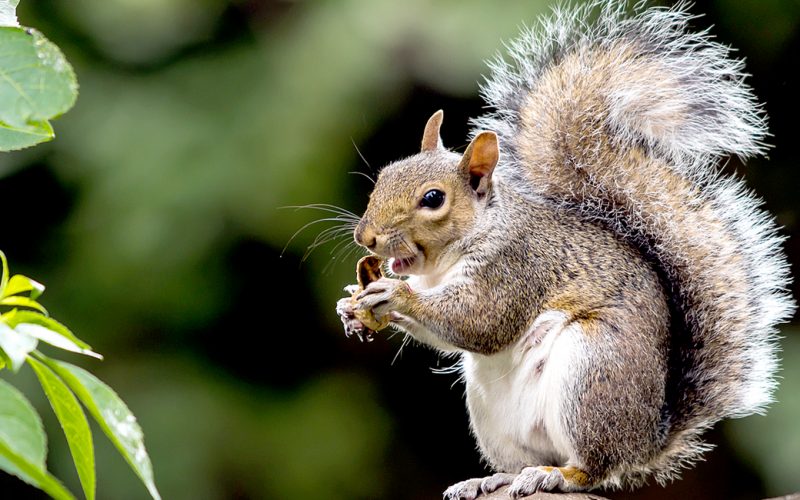Winter is a great time to go nuts for squirrels and watch them scamper around looking for food while much of nature is dormant within its seasonal sleep. But if you need an excuse, how about celebrating Squirrel Appreciation Day? Celebrated throughout winter but traditionally recognized on January 21, this companion holiday to Groundhog Day was started in 2001.
Squirrel Appreciation Day was founded by Christy Hargrove, a wildlife rehabilitator from Asheville, N.C. Hargrove explains that people can be flexible when commemorating the day.
“Celebration of the event itself is up to the individual or group,” Hargrove said. “Anything from putting out extra food for the squirrels to learning something new about the species.”
Squirrels may be pests to some, but many people are big fans. 76,586 people have “liked” the topic of squirrels on Facebook. These little fuzzies are perhaps best friends with the forest, helping to plant new trees when they forget where they hid their nuts. If only forgetting something were this useful for humans in our daily lives!
The name of these nimble creatures is a word borrowed from Ancient Greek, skiouros, meaning “shadow-tailed.” According to Wikipedia, “Squirrels are members of the family Sciuridae, consisting of small or medium-size rodents. The family includes tree squirrels, ground squirrels, chipmunks, marmots (including woodchucks or groundhogs), flying squirrels, and prairie dogs.” National Geographic cites 200 species of squirrels, varying in size from the three- to four-inch African pygmy squirrel to the three-foot-long Indian giant squirrel! They may seem insignificant, but a scurry (or group) of squirrels can be powerful – and impactful – creatures. In both 1987 and 1994, the NASDAQ stock market was shut down by squirrels chewing through the power lines. And if you see all-black (melanism) or all-white (albinism) squirrels, they are more than likely color variations of the eastern grey squirrel and not a separate species.
Eastern grey squirrels mostly eat bark, berries, seeds, acorns and nuts, and love common birdfeeder fill such as black sunflower seeds. The grey squirrel is the most common squirrel around Northwest Arkansas, so you’re most likely to see them if you make this DIY squirrel feeder. By spreading peanut butter (or other nut butter) on a few pinecones and then rolling them around on a tray of sunflower seeds, you can make simple squirrel feeders. Attach these pinecone snacks to a tree near your house using safe, biodegradable rope like twine, preferably near a window so you can observe the activity. Beware of placing them too close to the ground, or the raccoons will enjoy them instead!
If you need another excuse to adore squirrels, Groundhog Day is coming up Feb. 2. Although groundhogs (or marmots) have been superstitiously known in Canada and the United States as weather forecasters, their predictions have been mostly wrong. To learn more about our urban wildlife, check out Lyanda Lynn Haupt’s book “Urban Bestiary: Encountering the Everyday Wild.”
Ripples is an emerging online educational center inspired by a holistic approach to making a difference. Follow our journey to live sustainably and make ripples with our lifestyle at: www.RipplesBlog.org.











